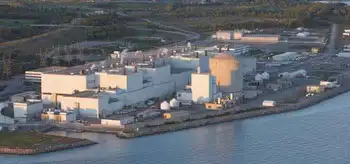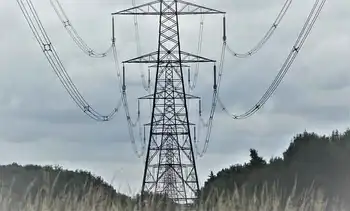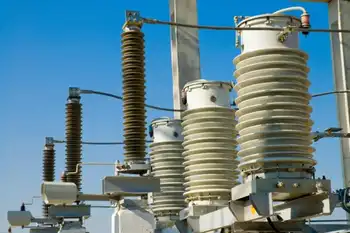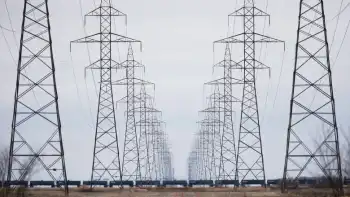Federal regulators can overrule on transmission routes
The region's designation as a "national interest electric transmission corridor" has the potential to minimize delays in getting several proposed transmission lines built in parts of Maryland, Virginia, West Virginia, Ohio, Delaware, Pennsylvania, New York and New Jersey.
A second corridor was created in the Southwest, including parts of California and Arizona.
Proponents say the projects could help lower electric rates in Maryland, where a lack of transmission has prevented utilities from piping in lower-cost power from the Midwest and other areas that have surplus energy to sell. It also is expected to result in fewer blackouts such as the one that crippled much of the Northeast in August 2003.
Some predict that Maryland could face an energy shortfall within five years unless new transmission and generation capacity is built to meet growing demand. Proponents say the problem is that transmission projects cross state borders and often take more than a decade to approve in the face of opposition from homeowners, environmentalists and local officials who don't want huge transmission towers on their turf.
The order says that states have one year to act upon projects or energy companies can appeal to the Federal Energy Regulatory Commission for approval to build.
"The goal is simple - to keep reliable supplies of electric energy flowing to all Americans," said Energy Secretary Samuel W. Bodman in a statement.
"By designating these national corridors, we are encouraging stakeholders in these regions to identify solutions and take prompt action."
Congress gave the department authority to create the corridors in 2005 to help address problems with the nation's energy infrastructure. The final order came after months of public comment. The plan has angered lawmakers in New York, New Jersey, Virginia and some other states, who say it takes authority out of state hands and gives federal regulators authority to seize property. It has also worried property owners and environmentalists, who say many of the projects are unnecessary.
Some of the power lines proposed throughout the Mid-Atlantic grid cut across Civil War battlefields and environmentally sensitive areas used for recreation.
Maryland, which has faced record electric rate increases with the move to deregulation, is not among those voicing opposition.
Steven B. Larsen, chairman of the state Public Service Commission, said the Energy Department's order underscores the problems Maryland faces in maintaining affordable and reliable electricity. "This transmission shortfall will result in higher rates for Marylanders and may lead to more severe consequences in the next several years, such as brownouts during peak usage," Larsen said.
A pair of new lines proposed in the Mid-Atlantic corridor could increase transmission capability in the region by 7,500 megawatts, industry officials say. One megawatt is enough to power roughly 1,000 average homes.
It's too soon to say whether the corridor designation will factor into decisions concerning power projects affecting Maryland. The power lines are in the early stages of development and have not been submitted to the PSC for approval. Key among them is a 290-mile line that would extend from a substation near a coal-fired power plant in West Virginia to a substation in Kemptown, in Frederick County.
The project is a joint venture between Allegheny Energy Inc., a utility serving Western Maryland, and Ohio-based American Electric Power, which owns the coal plant. The project would create a new pathway to bring low-cost coal generation into Maryland.
The project is the first phase in what the companies hope will be a 550-mile transmission line extending across Maryland and into New Jersey. The second half of the project is still being reviewed by PJM Interconnection, which operates the regional power grid. PJM says the establishment of the corridor fits with its own concerns about regional transmission bottlenecks, which are especially severe in the Baltimore-Washington zone.
PSC officials don't expect to see an application for the first phase of the line until next year, and utility officials don't expect the line to be operational until 2012. Officials with AEP and Allegheny say they are committed to working with state regulators in getting their project approved. But the Energy Department order is recognition that the problems facing the nation's energy grid require a regional approach, rather than a patchwork of state solutions, they argue.
"Even though we are regulated by state utility commissions, the transmission system is much like the interstate highway system - it benefits people across all states," said Allen Staggers, a spokesman for Allegheny Energy.
Melissa McHenry, a spokeswoman for AEP, said the corridor designation will prevent local interests from blocking a project that could benefit economies in several states. "It really does prevent one state from impeding the development of a regional transmission line," she said.
Utilities say that oftentimes it's not state regulators that hold up projects, but rather federal agencies trying to protect federally owned forests from being crossed by power lines. AEP took nearly 14 years to get permits for a 90-mile line stretching from West Virginia into Virginia. The order will allow utilities to go directly to FERC for approval rather than trying to negotiate with multiple federal land agencies.
Environmentalists say the order benefits power companies at the expense of conservation programs that could render some transmission projects unnecessary. Many object to transmission lines that will ship electricity from polluting coal plants in the Midwest to the populated East Coast.
"At the end of the day, this is just an attempt to transport coal from the Ohio Valley to points east," said Robert Lazaro, spokesman for Piedmont Environmental Council, a nonprofit environmental group in Virginia. The group opposes a transmission line proposed by Dominion Virginia Power and Allegheny Energy that would extend from southwest Pennsylvania to Northern Virginia.
The project is among those that would alleviate congestion on separate lines that serve Maryland, helping to ease higher electric rates in the state. Lazaro echoed industry officials who say the order is likely to face legal challenges from states and environmental groups opposed to the creation of transmission corridors.
"It usurps the local powers," he said. "It says if power companies don't like the answer they get (from state regulators), they can go to the federal government for an answer."
Related News

Ontario announces SMR plans to four reactors at Darlington
TORONTO - The day after Ontario announced it would be building an additional 4,800 megawatts of nuclear reactors at Bruce Nuclear Generating Station, the province announced it would be dramatically expanding its planned rollout of small modular reactors at its Darlington Nuclear Generating Station.
Ontario Power Generation OPG was always going to be the first to build the GE-Hitachi BWRX-300 small modular reactor SMR, with the Tennessee Valley Authority, SaskPower and several European nations following suit. But the OPG was originally going to build just one. On July 7, OPG and the Province of Ontario announced they would be bumping that…





